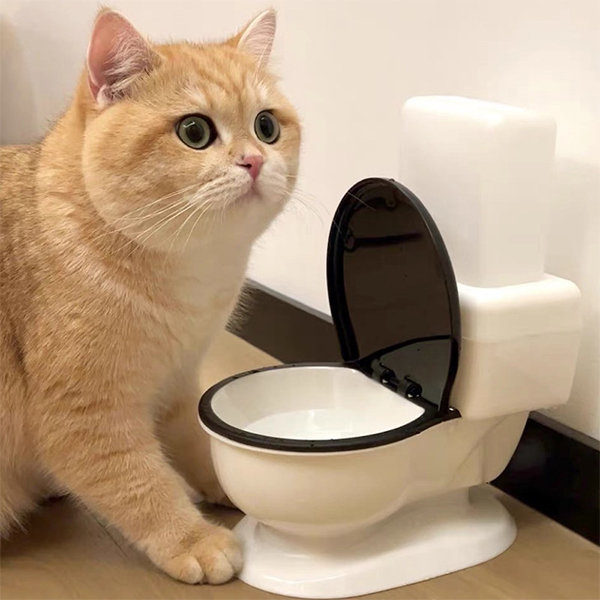Potential Issues of Flushing Cat Poop Down Your Toilet - Safeguard Your Plumbing
Potential Issues of Flushing Cat Poop Down Your Toilet - Safeguard Your Plumbing
Blog Article
On this page below you'll find a bunch of reliable answers on the subject of Can You Flush Cat Poo or Litter Down the Toilet?.

Intro
As feline owners, it's essential to bear in mind exactly how we get rid of our feline buddies' waste. While it might seem hassle-free to purge feline poop down the bathroom, this practice can have detrimental consequences for both the setting and human health.
Alternatives to Flushing
Thankfully, there are safer and a lot more liable ways to deal with feline poop. Think about the complying with choices:
1. Scoop and Dispose in Trash
The most typical method of getting rid of cat poop is to scoop it right into a naturally degradable bag and toss it in the garbage. Make sure to use a dedicated trash inside story and throw away the waste promptly.
2. Usage Biodegradable Litter
Opt for naturally degradable pet cat trash made from products such as corn or wheat. These trashes are eco-friendly and can be safely taken care of in the trash.
3. Bury in the Yard
If you have a yard, take into consideration burying feline waste in a marked area away from veggie gardens and water sources. Be sure to dig deep sufficient to stop contamination of groundwater.
4. Install a Pet Waste Disposal System
Purchase a pet waste disposal system especially designed for cat waste. These systems utilize enzymes to break down the waste, reducing odor and ecological influence.
Health Risks
In addition to ecological problems, flushing cat waste can likewise present wellness risks to humans. Feline feces might have Toxoplasma gondii, a parasite that can trigger toxoplasmosis-- a potentially severe disease, especially for expectant females and people with weakened immune systems.
Environmental Impact
Flushing feline poop introduces dangerous virus and bloodsuckers into the water system, presenting a significant risk to marine ecosystems. These pollutants can adversely affect aquatic life and concession water high quality.
Verdict
Liable animal ownership prolongs beyond giving food and shelter-- it additionally includes appropriate waste monitoring. By refraining from flushing cat poop down the bathroom and going with alternative disposal techniques, we can decrease our ecological impact and protect human health and wellness.
Why Can’t I Flush Cat Poop?
It Spreads a Parasite
Cats are frequently infected with a parasite called toxoplasma gondii. The parasite causes an infection called toxoplasmosis. It is usually harmless to cats. The parasite only uses cat poop as a host for its eggs. Otherwise, the cat’s immune system usually keeps the infection at low enough levels to maintain its own health. But it does not stop the develop of eggs. These eggs are tiny and surprisingly tough. They may survive for a year before they begin to grow. But that’s the problem.
Our wastewater system is not designed to deal with toxoplasmosis eggs. Instead, most eggs will flush from your toilet into sewers and wastewater management plants. After the sewage is treated for many other harmful things in it, it is typically released into local rivers, lakes, or oceans. Here, the toxoplasmosis eggs can find new hosts, including starfish, crabs, otters, and many other wildlife. For many, this is a significant risk to their health. Toxoplasmosis can also end up infecting water sources that are important for agriculture, which means our deer, pigs, and sheep can get infected too.
Is There Risk to Humans?
There can be a risk to human life from flushing cat poop down the toilet. If you do so, the parasites from your cat’s poop can end up in shellfish, game animals, or livestock. If this meat is then served raw or undercooked, the people who eat it can get sick.
In fact, according to the CDC, 40 million people in the United States are infected with toxoplasma gondii. They get it from exposure to infected seafood, or from some kind of cat poop contamination, like drinking from a stream that is contaminated or touching anything that has come into contact with cat poop. That includes just cleaning a cat litter box.
Most people who get infected with these parasites will not develop any symptoms. However, for pregnant women or for those with compromised immune systems, the parasite can cause severe health problems.
How to Handle Cat Poop
The best way to handle cat poop is actually to clean the box more often. The eggs that the parasite sheds will not become active until one to five days after the cat poops. That means that if you clean daily, you’re much less likely to come into direct contact with infectious eggs.
That said, always dispose of cat poop in the garbage and not down the toilet. Wash your hands before and after you clean the litter box, and bring the bag of poop right outside to your garbage bins.
https://trenchlesssolutionsusa.com/why-cant-i-flush-cat-poop/

Do you enjoy reading up on Can You Flush Cat Poo or Litter Down the Toilet?? Put a comment below. We'd be glad to see your feelings about this blog entry. In hopes that you come back again later on. Are you aware of someone else who is very much interested in the niche? Do not hesitate to share it. Thanks a lot for going through it.
Book A Service Report this page